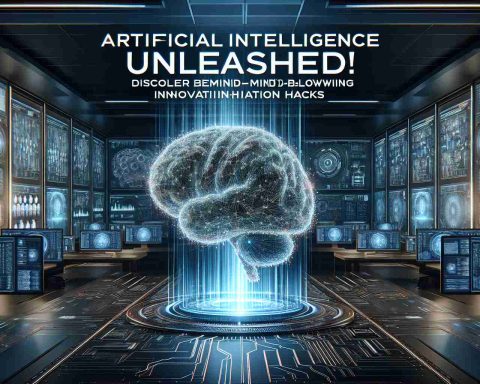The tech world witnessed a momentous occasion in Taiwan as NVIDIA’s CEO, Jensen Huang, brought together industry titans for a remarkable banquet focused on artificial intelligence. This event, dubbed a “trillion-dollar banquet,” saw influential figures like TSMC’s chairman and leaders from ASUS, Quanta, GIGABYTE, and more in attendance.
During the gathering, discussions revolved around NVIDIA’s strategic partnership with TSMC, underscoring their pivotal role in chip manufacturing. The collaboration has lasted over two decades, and both leaders expressed gratitude for this successful alliance. Jensen Huang acknowledged his transformation over the years and emphasized TSMC’s crucial contribution to NVIDIA’s achievements.
One of the key announcements from the evening involved a groundbreaking joint project. NVIDIA and TSMC disclosed plans for research in silicon photonics, which is expected to yield significant advancements in technology over the next few years.
Additionally, the partnership aims to explore innovative applications in robotics and autonomous vehicles, indicating a strong commitment to pushing the boundaries of AI technology. Huang also detailed the complexity of their latest AI servers, the Blackwell series, which comprise an astonishing 600,000 parts and weigh 1.5 tons, highlighting the intricate engineering involved in modern computing.
As NVIDIA and its partners continue to forge ahead, the future of AI and tech innovation appears bright.
The Future of AI: Global Implications and Opportunities
The recent gathering of industry leaders in Taiwan, centered around NVIDIA’s transformative role in artificial intelligence, underscores a profound shift in societal dynamics. As AI technology increasingly permeates various sectors—from healthcare to finance—it promises to reshape not only corporate structures but also the fabric of daily life.
AI’s impact on the global economy is becoming unmistakable. Analysts predict that the AI market will grow exponentially, potentially reaching $15.7 trillion by 2030. This surge creates new job categories while simultaneously rendering certain roles obsolete. The skills gap in the workforce will require swift educational reforms, pivoting toward digital literacy and advanced technological training to meet future demands.
Moreover, environmental considerations loom large as AI becomes more integrated into operations. Energy consumption and waste associated with large-scale AI models are critical concerns. For example, a single AI model can emit as much carbon as five cars in their lifetime. Thus, the industry must prioritize sustainable practices alongside innovation.
Potential long-term trends also suggest a consolidation of power among tech giants. As organizations rely on an ecosystem of partnerships—like NVIDIA and TSMC’s fruitful alliance—control over critical resources may deepen disparities between leading firms and smaller entities.
In summary, the trajectory of AI will not only forge new technological frontiers but also compel a reevaluation of ethical practices, economic policies, and environmental responsibility, marking this era as one of pivotal transformation.
Unveiling AI Innovations: NVIDIA and TSMC’s Trillion-Dollar Banquet
The recent gathering of industry leaders in Taiwan for NVIDIA’s “trillion-dollar banquet” marked a significant milestone in the intersection of artificial intelligence (AI) and semiconductor technology. Under the visionary leadership of CEO Jensen Huang, NVIDIA brought together notable figures, including TSMC’s chairman and executives from major tech companies such as ASUS, Quanta, and GIGABYTE, to discuss pivotal advancements that could shape the tech landscape.
Strategic Partnership with TSMC
The longstanding partnership between NVIDIA and TSMC has been instrumental in the evolution of chip manufacturing. For over two decades, this collaboration has fostered significant technological advancements and innovation. Jensen Huang expressed deep appreciation for TSMC’s contributions to NVIDIA’s success, indicating that their relationship has been foundational not only for NVIDIA but for the entire semiconductor industry.
Groundbreaking Silicon Photonics Research
One of the highlights of the banquet was the announcement of a joint initiative focused on silicon photonics. This technology promises to revolutionize data transfer rates and capacity within computing systems, potentially leading to faster computing and advancements in data centers. As optical communications continue to become a vital component of high-performance computing, the outcomes of this research could have far-reaching implications across various tech sectors.
Pushing Boundaries in Robotics and Autonomous Vehicles
The commitment to exploring innovative applications in robotics and autonomous vehicles underscores the urgency of integrating AI into real-world technologies. Advances in these fields are expected to be accelerated by enhanced processing capabilities and smarter algorithms, indicating a future where AI systems play a crucial role in everyday life. This aligns with global trends emphasizing automation and intelligent solutions to complex problems.
Complex AI Infrastructure: The Blackwell Series
Huang highlighted the unprecedented engineering feat behind NVIDIA’s latest AI server series, known as the Blackwell series. With approximately 600,000 individual parts and a weight of 1.5 tons, these servers represent the pinnacle of modern computing. This level of complexity not only showcases NVIDIA’s technical prowess but also reflects the growing demands for powerful AI-driven infrastructures in various industries.
Insights into Future Trends
The collaboration between NVIDIA and TSMC is expected to create new opportunities and drive technological advancements in AI. Analysts predict a surge in investments geared towards AI infrastructure, enhancing the demand for more sophisticated chip designs capable of supporting complex algorithms. As AI technologies become ubiquitous, industries ranging from healthcare to finance will likely benefit from the breakthroughs that stem from this partnership.
Pros and Cons of AI Advancements
Pros:
– Increased Efficiency: Enhanced AI systems can automate repetitive tasks, leading to greater productivity across industries.
– Innovation in Transportation: Autonomous vehicles have the potential to reduce accidents and optimize traffic management.
Cons:
– Job Displacement: Automation could lead to significant job losses in sectors where human labor is replaced by AI systems.
– Security Concerns: As AI technology advances, so do the risks associated with cybersecurity and data privacy.
Conclusion
The discussions and announcements made during NVIDIA’s banquet signal a promising future for AI and semiconductor technology. As partnerships solidify and research initiatives unfold, the landscape of industry innovation is set to evolve dramatically, positioning companies at the forefront of the AI revolution.
For more insights into NVIDIA’s innovations and future plans, visit NVIDIA’s official website.













